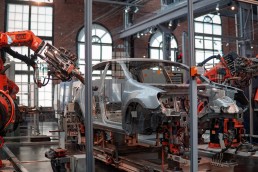Electric Powered Construction Machines Continue to Grow Exponentially in 2022
Manufacturers are looking towards electrically powered construction machines now more than ever and the numbers of electrically powered machines launched continues to grow in the market. According to certain estimates that nearly 60 electric excavator models have been introduced into market this year (second quarter of 2022).
From a statistical perspective, this generally means that more than 30 % of all new excavators being introduced are electric powered. A report released by Construction Highway indicates that from the 90 over machines specific to the construction industry introduced, more than 35 were electrically powered. These machines included mini excavators, aerial platforms and crawler cranes among others.
Demand for Earthmoving and Road Building Equipment
According to a global survey, the demand for construction machinery integral to earthmoving and road building projects has grown by 26 % since 2021. The growth is mainly attributed to demand for standard and mini excavators because of their practical sizes that allow these machines to be used in congested areas effectively. Companies that offer excavators for hire have started to increase orders for electric powered mini excavators significantly causing manufacturers to afford more emphasis on these machines.
As for fossil fuel powered models, these machines are being equipped with the latest technologies which not only make them fuel efficient, but also versatile, powerful and flexible. Apart from excavators, manufacturers also introduced electric powered tandem rollers which received almost instantaneous positive response from the market worldwide. Other equipment (electric/ battery powered) included aerial platforms as the market received more than thirty new machines within a 3month period and this included scissor lifts which were all battery powered. There was also an electric crane that was launched in June (telescopic crawler).
However, conventional models are keeping up pace with manufacturers such as Komatsu, Volvo CE, Hitachi and Kobelco introducing new generation machines that comply with every regulation there is and then some. For example the latest models from Kobelco such as the 55SRX-7 and the 455RX-7 that subscribe to the Performance X Design Concept which were previously only available for Kobelco’s larger excavator models. These two new models are compact tail swing machines that are approximately on 6.5 inches wide which make them perfect for projects located in urban or residential areas.
They are also suited for domestic small scale projects (home improvement projects) and are capable of a wide variety of tasks albeit on a smaller scale. Bothe these machines are diesel powered and chug out 37 HP making them powerful enough to take on most small scale tasks without any issues. These machines become even more efficient when operated under the S – Mode (Energy Saving Modes) when they are used for light weight jobs such as moving material about or digging soft earth. Both machines utilise 26 % less fuel in S Mode compared to H Mode. It is also worth to mention that these machines come with standard auto deceleration functions which adds to the efficiency element of these machines.
The counterweight (55SRX-7) weighs nearly 12,000 with the reach of its standard arm being almost 6 feet and in the event a longer arm is required, a longer arm spec is available. The max dig reach is 19 feet 6 inches with the standard arm and has a reach of 20 feet. The 455RX-7 places it close to the 5-ton category (10,030 pounds) and also powered by the Yanmar engine, this machine popular among excavator for hire companies. The reach is slightly lower from the 55SRX-7 model by only a mere two feet. Both machines are also ergonomically designed and have a variety of digital elements that assist in operations enhancing the performance and productivity significantly.
Will America adopt a four-day workweek?
“We're already having a hard time letting some people work remotely, so the four-day workweek is a little bit further out,” Kira Meinzer, chief people officer at Envoy Global, told HRD America Talk.
If the concept ever does gain traction in the U.S., Meinzer predicts it will spawn from the technology industry, which she considers to be the “biggest change enabler” in the economy. “But they're also the companies that have pulled back on the remote work, so this will be interesting,” she said. “I can't say that I don't think it will or won't happen, it'll just be a larger challenge than what we're already facing.”
If HR leaders are considering such a seismic shift, Meinzer suggests starting gradually by experimenting with “Summer Fridays,” in which the office closes early, or “No Meetings Fridays,” which allow employees to get caught up on their work.
“We've moved to ‘No Meetings Fridays’ to give people time to focus and spend less time in front of the camera and on the phone, which has proven to be great for the mental health of our employees,” Meinzer said. “It's so tough because you talk so much about meeting employee needs, but everybody's different. Everybody has unique challenges, so whenever these kind of one-size-fits-all solutions comes up, it never actually seems like it can work. But this has been.”
Meinzer explains the “hardest puzzle to solve” with the four-day workweek in the latest episode of HRD America Talk.
How To Do Digital Transformation The Right Way
Major sectors of manufacturing are embracing digital transformation for their own reasons and at different paces. But there are some common best practices for these varying industries as they sink hundreds of billions of dollars into their operations in order to optimize new technologies under what’s become known as Industry 4.0.
The best approaches across verticals include a crawl-walk-run strategy on digital simulations of supply chains and factory operations, a focus on helping scarce labor make the most of industrial automation, and the possibility of “reshoring” operations hand in hand with greater digital investments.
“There’s a shift in the way the market is thinking about [digital] solutions, and it really is a solutions-first approach,” Ryan Martin, industrial and manufacturing markets research director at ABI Research, told Chief Executive. “You figure out the problem and the solution first, and then the technology to support that.”
The global automotive sector has become the biggest spender on digital transformation, ABI’s latest study found, forecasting that the industry will invest nearly $100 billion this year and more than $238 billion annually by 2030 in its transformation to electric vehicles from internal-combustion powertrains.
Automakers need software to design new types of vehicles and work with Tier One parts suppliers to assure performance requirements and the demands of mass customization, while the OEMS will need to transition production to the new types of vehicles without harming production volumes, ABI said.
Read the original article from ChiefExecutive.net
Future-Proofing Your End-To-End Supply Chain For 2023
The storm clouds are gathering, threatening much worse than the current cold drizzle. Bank of America, Lombard Research, and many others project recession will be with us by the end of the year. This is reflected by deteriorating CEO confidence in Q3 according to The Conference Board’s Measure of CEO Confidence™, with findings indicating CEOs are preparing for weakening economic conditions ahead. Consumer confidence has shown a mixed improvement since hitting its lowest levels post-pandemic, with the job market, inflation, interest rate hikes, and short-term finances among top concerns.
Given this volatility, leaders must prepare for a wider range of outcomes that have reasonable probability of occurring. The coming year will likely bring an underlying shift and realignment in power dynamics between supply-side (less power) and buy-side (more power) with a ubiquitous focus on cash. Future proofing the end-to-end supply chain in this environment means shifting from finite scenario planning to a “read and react” strategy focused on key markers to ensure your business and operations can pivot quickly to a rapidly changing economic and supply chain environment.
Executives who have multi-tiered business continuity and enhancement plans in the following six areas are well-placed to strengthen supply chain visibility, agility, optionality and resilience in times of volatile change.
Optimize your network design and manufacturing/distribution footprint.
The adjustments made during the pandemic will not prepare you for volatilities ahead, but the change from a transactional mindset to a strategic mindset within your supply chain workforce will remain essential.
Read the original article from ChiefExecutive.net
High Expectations: Managing For Value In The Automotive Industry
After a long stretch of undershooting investors’ expectations for Economic Profit (EP) growth and Total Shareholder Returns (TSRs), OEMs find themselves in an unfamiliar role: high performers.
Automotive OEMs have historically struggled to deliver the typical profit growth expectations set for most industries. The automotive industry’s high capital intensity, narrow margins and long product cycles challenged companies’ ability to consistently grow EP.
However, as new-vehicle supply tightened, expectations for battery-electric vehicles (BEV) rose, vehicle pricing increased and investor expectations began to rise.
The best measure of a company’s success is delivering superior shareholder returns compared to its industry peers. Since shareholder value is driven by investor expectations of future cash flow and EP growth (See S&P 500 Warranted Value of Discounted Economic Profits vs. Actual Traded Value chart, below), EP has been used as the profitability metric for AlixPartners’ Automotive Value Creation study.
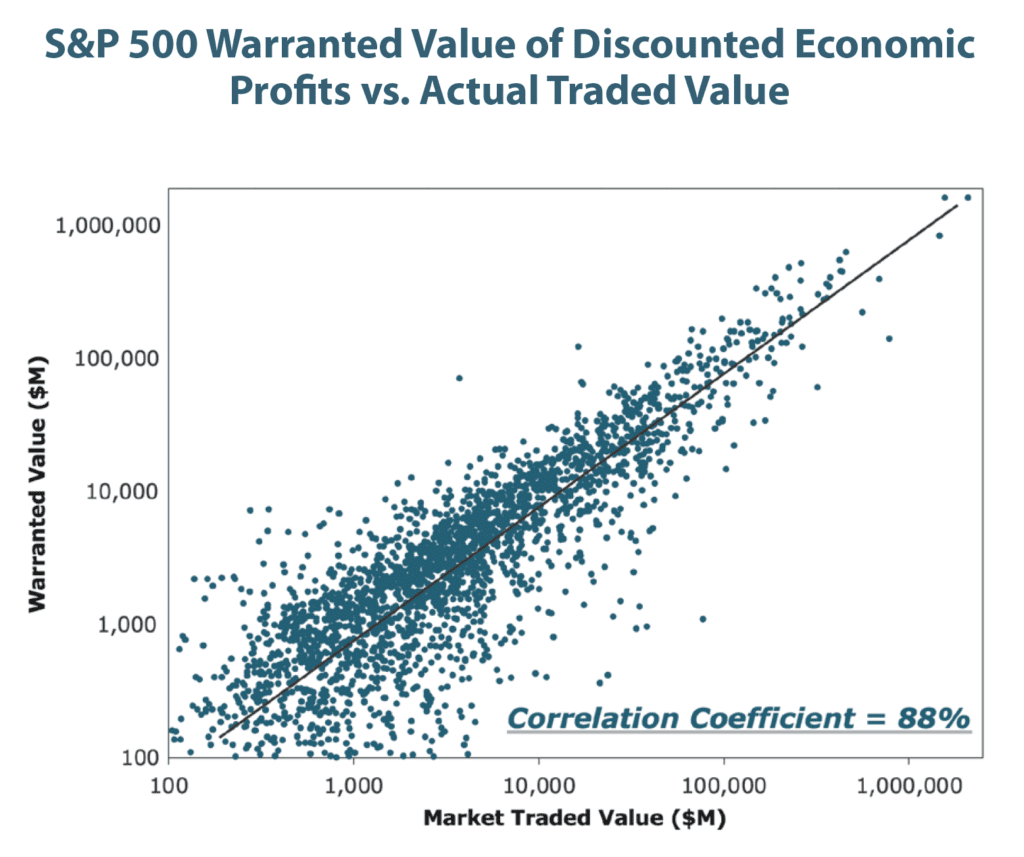
To sustain the recent increase in their TSRs, OEMs, like any other public company, will need to exceed investors’ already-high expectations for EP growth.
CHARTING THE MOMENTUM
To understand the backdrop, consider the three-year period leading up to January 2020. During this time, the industry’s EP growth was challenged as margins were squeezed by declining global volumes and high fixed costs.
Read the original article from ChiefExecutive.net
Enterprise Email Marketing: Top Trends and Challenges
Marketers at large companies plan to focus their email strategies more on automation and mobile-friendly design in the year ahead, according to recent research from OMI and Ascend2.
The report was based on data from a survey conducted in July 2022 among 133 marketers at enterprise companies (firms with 500 or more employees).
Respondents say the top email trends they plan to embrace as part of their strategies are automation (64% plan to include in their email program in the year ahead), mobile-friendly design (59%), and personalizing messages beyond simply the recipient's name (54%).
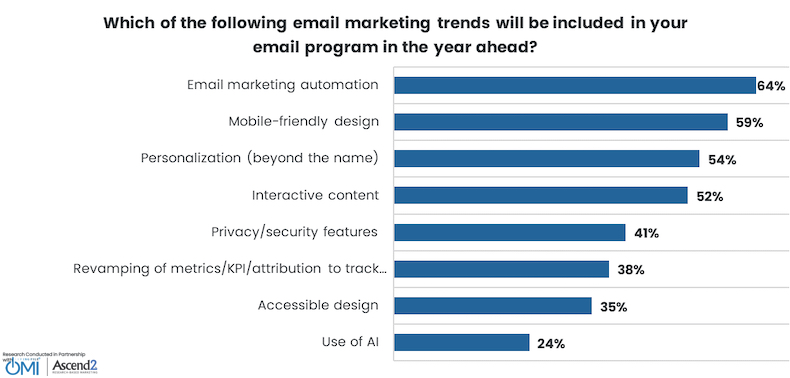
Enterprise marketers say their biggest challenges with their email programs are increasing engagement (59% cite) and measuring performance (47%).

Respondents say the most important tests they perform on their email programs are on personalization beyond the recipient's name (39% cite as important) and timing and frequency (38%).
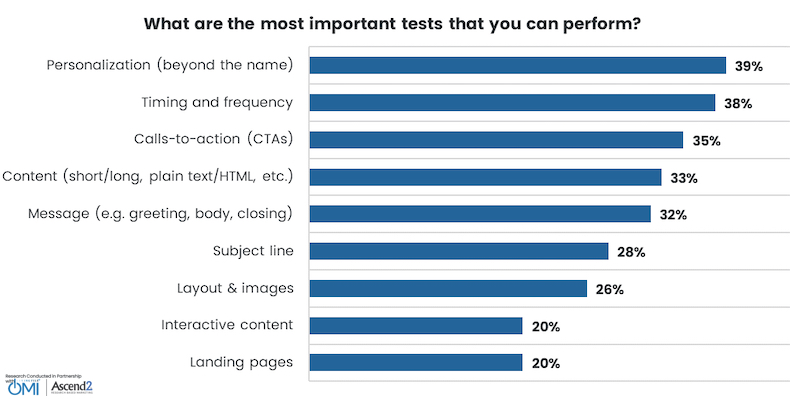
Enterprise marketers say the most useful ways to use AI as part of their email marketing programs would be for retargeting (39% cite as useful) and to better understand the customer lifecycle (39%).
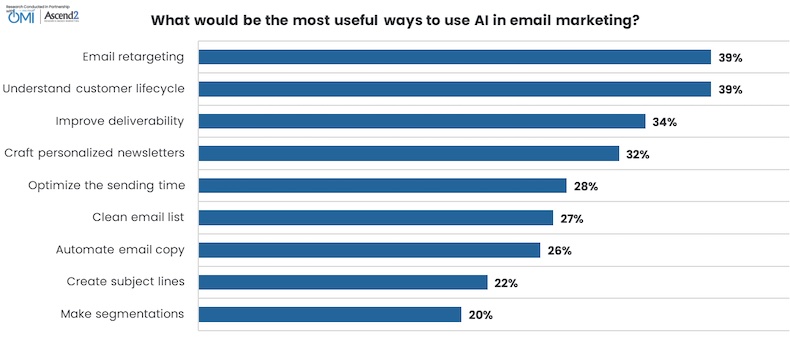
About the research: The report was based on data from a survey conducted in July 2022 among 133 marketers at enterprise companies (firms with
Read the original article from Marketing Prof
ESG materiality ranges beyond ‘bottom line’: SEC official
- The Securities Exchange Commission (SEC) will look beyond the figures that underlie net income when determining whether a company is in compliance with the agency’s proposed climate risk disclosure rule, an SEC enforcement official said Tuesday.
- “If the company has really put a lot of emphasis in its marketing around, for example, what it’s doing in the climate space, those are ways that I think it can become material even if you don’t necessarily see that translate to the bottom line,” according to Carolyn Welshhans, associate director of the SEC’s Enforcement Division.
- “Something can be material to a company — for example specific to that company’s business or its operations — not just as financial statements,” Welshhans said at Securities Enforcement Forum 2022 after noting that her comments did not necessarily reflect the view of the agency. “It’s not just quantitative — it’s not just ‘does something impact the bottom line.’”
Dive Insight:
The SEC is considering public comments on a rule that it proposed in March requiring publicly traded companies to provide detailed disclosures on carbon emissions and climate risk.
The SEC aims to mandate that companies describe on Form 10-K their strategy toward climate risk, including plans to achieve any targets they have set for curbing such risk.
Companies would also need to disclose data on their greenhouse gas emissions, either from their facilities or through their energy purchases, and obtain independent attestation of their data.
Read the original article from CFO DIve
Creating a phenomenal employee experience in the modern workplace
Thus, today’s hybrid and continually evolving workplace requires upgrading your HR strategies to keep your top employees inspired, prepared and excited to reach their full potential.
WorkTango is hosting a free webinar on how to create a phenomenal employee experience and future-proof your HR strategy in 2023.
In the free webinar, Rob Catalano, chief engagement officer at WorkTango, will reveal the key approaches HR leaders are taking today to increase engagement and elevate the employee experience on all fronts. He’ll also share a unique model and effective strategies you can implement to help you drive organizational change.
“Building a great employee experience that retains and inspires talent has become critical in today's changing workplace,” Catalano told HRD. “The current workforce includes remote and hybrid workplaces, major business transformation and change management, a heightened focus on employee wellness, and organizations trying to build a diverse, equitable, and inclusive workplace. All of this, compounded by a changing employee profile and their expectations, requires organizations to modernize their people practices.”
The free webinar will dive into best practices for adapting and thriving in the modern workplace, new HR trends and how to effectively apply them in key HR strategies, novel approaches to leverage other leaders in the company to support and own employee engagement and a model to drive better employee experience. Catalano will also teach you how to develop the right mindset, philosophy and approach towards organizational change.
Leveraging software offerings means looking beyond price
Your company’s software license renewal is right around the corner, and you are anticipating a tough contract re-negotiation. The business wants to add more licenses and new products, however, you’re also expecting a potential price increase. You have not budgeted for a larger deal, but you want to enable your team and ensure you’re getting the most out of your software investment.
So, before you sign another multi-figure deal, stop and ask yourself these key questions:
1. Are we proactively preparing? Strive to get ahead and control the dialogue from the driver’s seat rather than waiting for the vendor to come to you with a proposal to continue with terms that require a price increase. Position your organization to proactively define what you want from your renewal. It is also critical to align with your marketing, sales, procurement and IT leaders to establish a solid communications strategy to control messaging during negotiations.
2. What are we truly using? Maybe there are glaring opportunities due to a roadmap change, or your last renewal included the purchase of a new product that has not led to full user adoption. Often, the opportunities are more subtle with new users consistently needing to be added to core products, creating a perception of growth, but really there is a swath of licenses that are not being used frequently that was previously provisioned. Work with the vendor to understand login metrics such as frequency and time in the tool.
Read the original article from SCMR
Combating inflation with reward and discount programs
In an effort to reduce inflation, the Federal Reserve has repeatedly delivered massive rate hikes, with its most recent jumping to 3.25% in September. It was the third consecutive rate hike of 0.75% – the highest raise in nearly 30 years – and the fifth rate hike this year. According to Fed Chair Jerome H. Powell, the central bank expects to raise rates to 4.6% in 2023.
Raising the federal funds rate directly impacts how banks set the interest rates on credit cards, loans and savings accounts. With even more increases on tap, Americans’ economic struggles will only exacerbate – more than half (56%) say price increases are causing financial hardship for their household, up from 49% in January, according to a Gallup poll in September.
Now is the time for employers to step up and alleviate their employees’ pain. One way to help workers save money on daily expenses is through an employee discounts program, according to Molly Pemberton, Group Director of Retail at Reward Gateway.
“Embedding a discount platform into your benefits solution allows employees to stretch their dollars further,” Pemberton told HRD. “They can use it to save on a range of their day-to-day purchases from fashion and electronics, to travel and entertainment. It takes the edge off some of those purchases and frees up some of those crucial dollars.”
Founded in 2006, Reward Gateway provides an employee engagement platform that brings employee benefits, discounts, recognition and reward, wellbeing, communications and surveys into one unified hub.
Read the original article here




